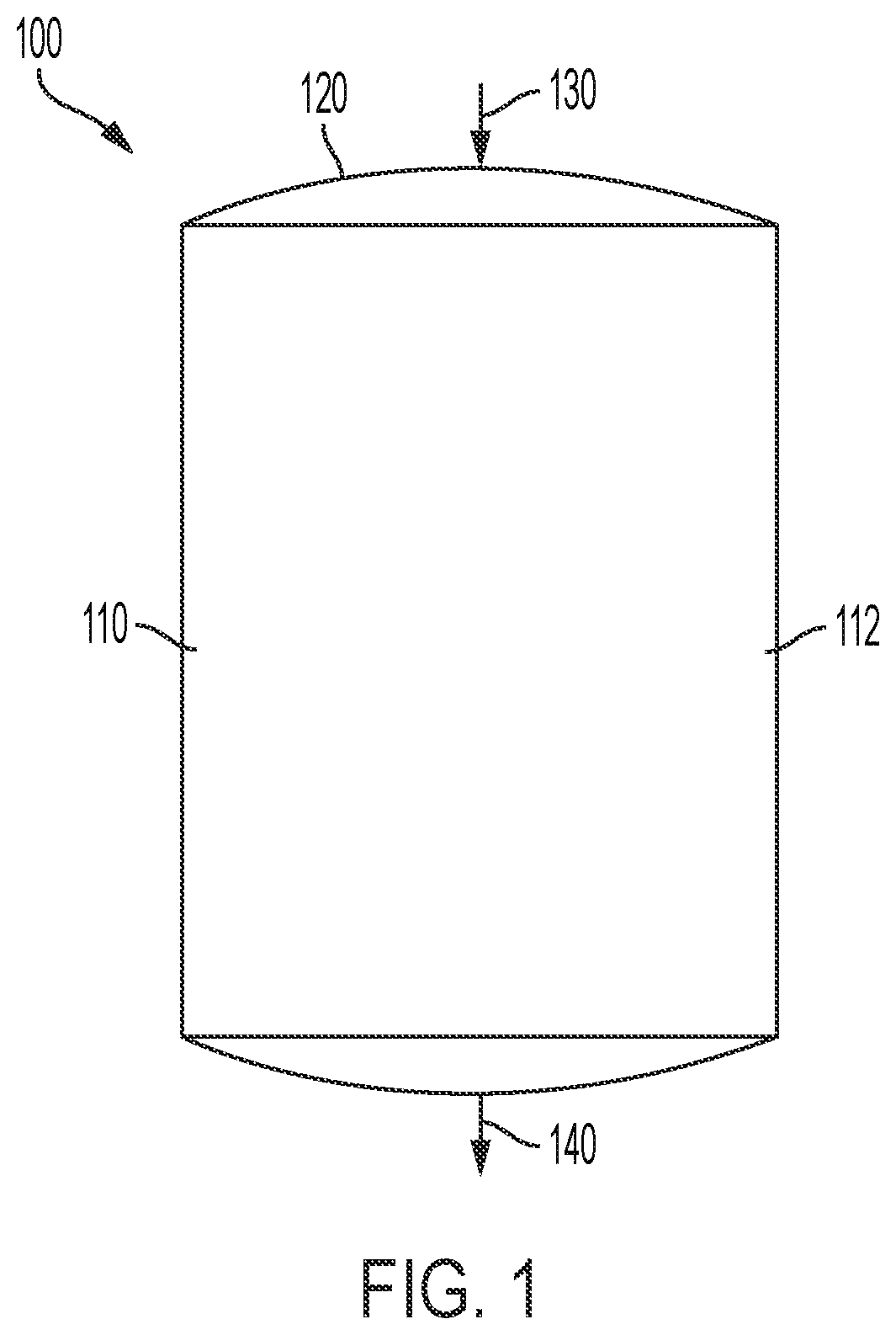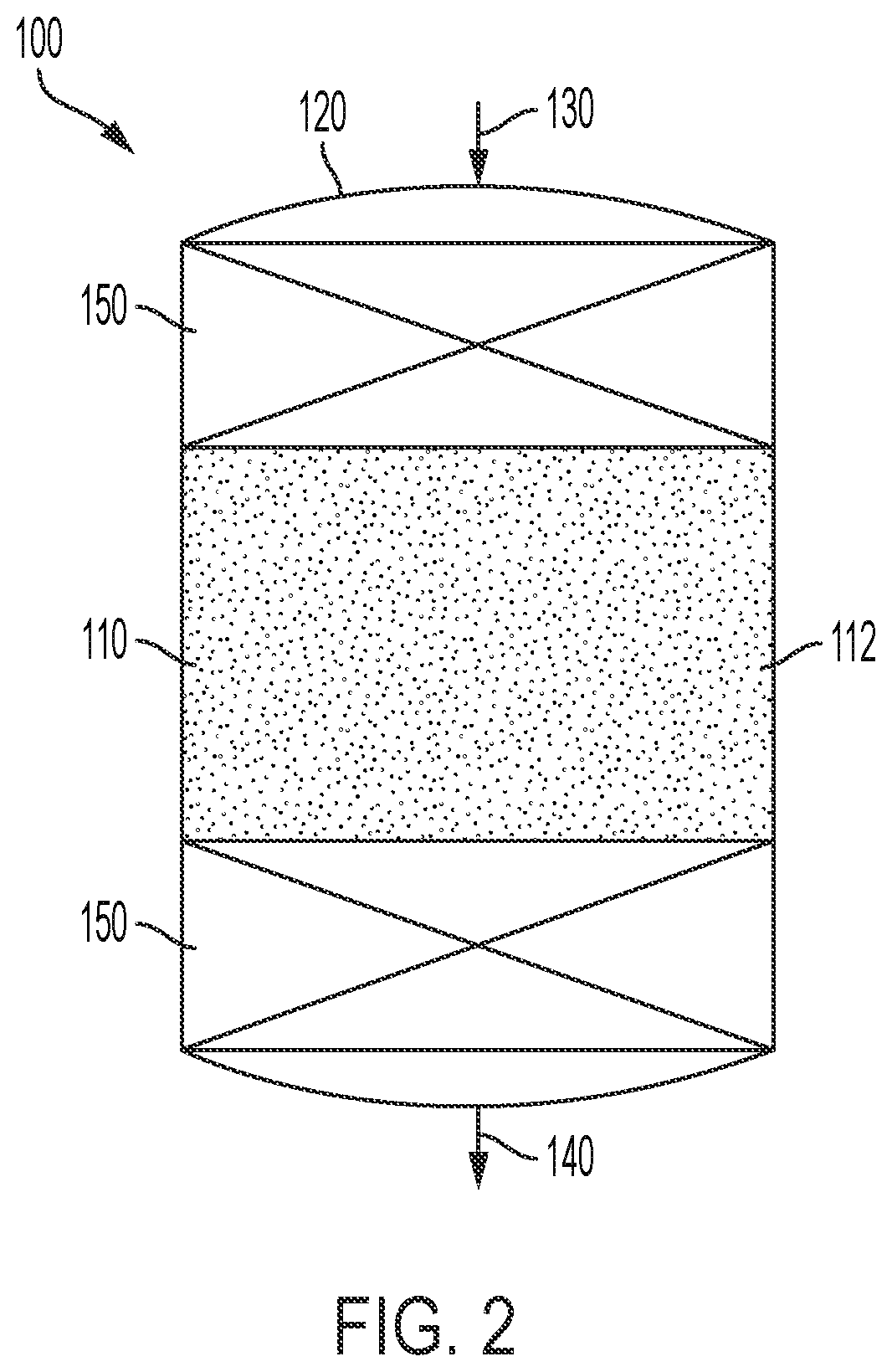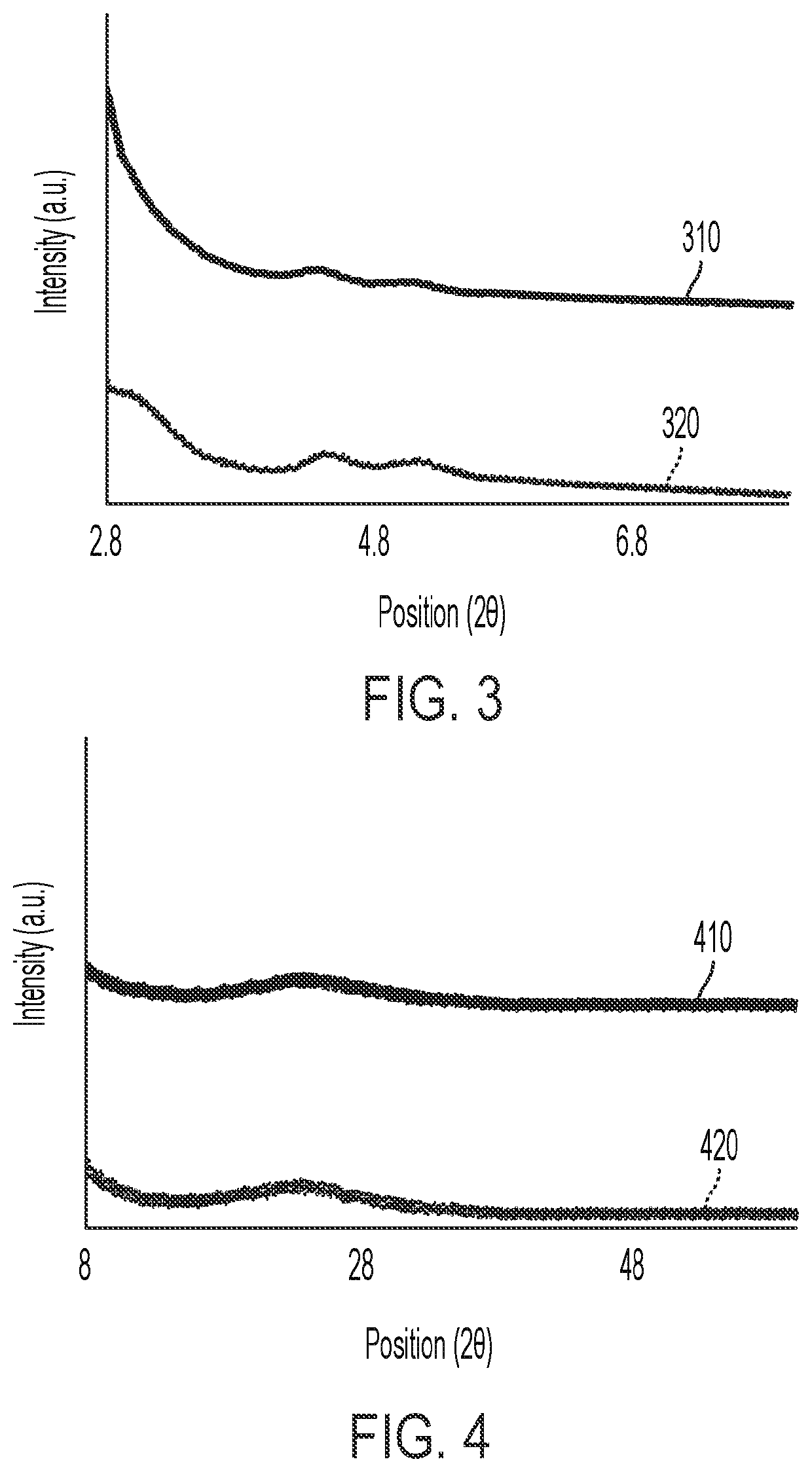Methods for low temperature production of 1-butene
a technology of 1-butene and low temperature, applied in the direction of physical/chemical process catalysts, metal/metal-oxide/metal-hydroxide catalysts, etc., can solve the problem of inefficient conventional 1-butene production processes, comparatively small 1-butene yield, and require reaction at significantly elevated temperature. , to achieve the effect of improving the conversion rate of 2-butene, improving the catalytic activity, and improving the isomerization catalys
- Summary
- Abstract
- Description
- Claims
- Application Information
AI Technical Summary
Benefits of technology
Problems solved by technology
Method used
Image
Examples
examples
[0050]The various embodiments of isomerization catalysts, methods of making the isomerization catalysts, and methods of using the isomerization catalyst in the production of 1-butene will be further clarified by the following examples. The examples are illustrative in nature, and should not be understood to limit the subject matter of the present disclosure.
Inventive Example 1—WO3 / MCM-48
[0051]A MCM-48 catalyst with WO3 incorporated into the silica framework of the MCM-48 catalyst was prepared in accordance with incipient wetness impregnation methods. Specifically, 0.177 grams (g) of ammonium metatungstate hydrate (99.9+%, Strem chemicals Inc.) was dissolved in 1.5 g of deionized water. The resulting ammonium metatungstate hydrate solution was then added drop by drop to 1.5 g of MCM-48 (Sigma-Aldrich). The MCM-48 catalyst with incorporated ammonium metatungstate hydrate solution was then dried overnight in a preheated oven at 80° C. to form a dried catalyst precursor. The dried catal...
PUM
| Property | Measurement | Unit |
|---|---|---|
| temperature | aaaaa | aaaaa |
| wt. % | aaaaa | aaaaa |
| temperatures | aaaaa | aaaaa |
Abstract
Description
Claims
Application Information
 Login to View More
Login to View More - R&D
- Intellectual Property
- Life Sciences
- Materials
- Tech Scout
- Unparalleled Data Quality
- Higher Quality Content
- 60% Fewer Hallucinations
Browse by: Latest US Patents, China's latest patents, Technical Efficacy Thesaurus, Application Domain, Technology Topic, Popular Technical Reports.
© 2025 PatSnap. All rights reserved.Legal|Privacy policy|Modern Slavery Act Transparency Statement|Sitemap|About US| Contact US: help@patsnap.com



